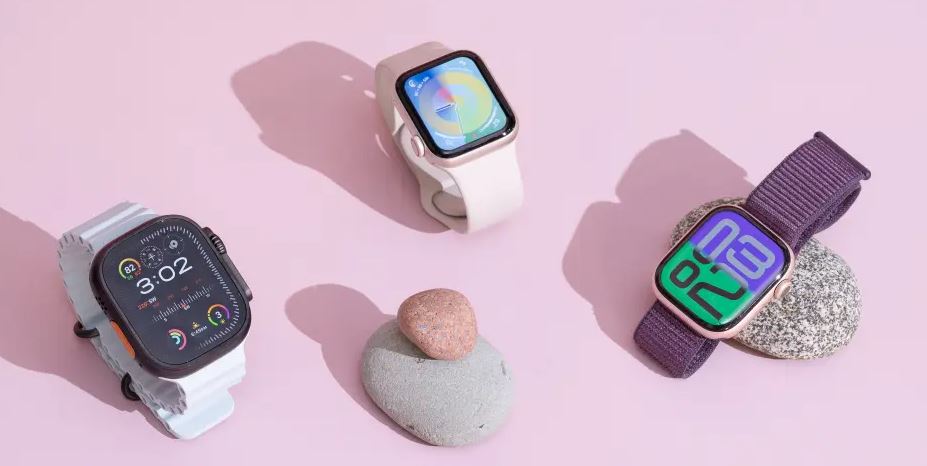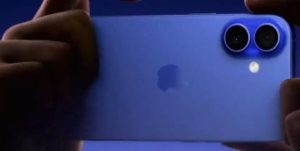
If you have an iPhone and you want a smartwatch, buying an Apple Watch is a no-brainer, and for most people, the Apple Watch Series 10 is the best option available. But we also found plenty of reasons to like the budget-friendly Apple Watch SE and the sportier Apple Watch Ultra 2.
The Apple Watch Series 10 has the best combination of features and apps for the price—if you’re looking for a smartwatch for yourself, we think it’s the one to buy. But the 2nd-generation Apple Watch SE is a great first smartwatch (or gift for a family member), though it offers fewer features and lacks an always-on display. Our upgrade pick, the expensive and huge Apple Watch Ultra 2, is designed for athletes, but it’s also ideal for anyone who wants a more rugged design and lengthy battery life.
The Apple Watch Series 10 offers the best combination of style, health and fitness features, app selection, battery life, and price of any smartwatch for any platform. It’s Apple’s thinnest smartwatch ever, with more active screen area than the Series 9, but smartwatch size creep is getting noticeable: The smallest Series 10 is 42 mm, which was once Apple’s largest watch size. (The larger Series 10 is 46 mm.) The Series 10 supports the Series 9’s Double Tap gesture, and it includes two temperature sensors, car-crash detection, emergency SOS, an always-on display, ECG, sleep apnea detection, and faster charging than previous models. If you’re upgrading from a Series 6, 7, 8, or 9, you’ll lose access to Apple’s blood oxygen measurement, which isn’t available on the Series 10.
The Apple Watch SE is smaller than the Series 10, coming in 40 mm and 44 mm case sizes, so it’s easier to wear for folks with small wrists. However, its smaller screen wakes only when you tap it or raise your wrist, so it isn’t as useful for telling time. It also lacks the temperature sensors, ECG feature, and sleep apnea detection of more expensive Apple Watches, so it’s not as good for health tracking. Otherwise, it does the same Apple Watch–y things, including notifications, heart-rate monitoring, and crash detection. And it costs at least 30% less, depending on the configuration, making it an appealing choice for anyone on a tighter budget.
The Apple Watch Ultra 2 is a rugged smartwatch designed to compete with dedicated diving watches and running watches from the likes of Garmin. The Ultra 2’s 49-mm case size makes it the biggest Apple Watch, and it has the brightest display at up to 3,000 nits (a unit measuring brightness), so it’s the easiest to see in blazing sunlight. In addition to its larger size, the Ultra 2 has a few key design differences that separate it from other Apple Watches, including a flat-edged screen, a 30% larger Digital Crown, and a side Action button for quickly launching an app. All those features, combined with its lengthy battery life—more than double that of the Series 10—make the Ultra 2 an absolute beast. Apple has muddied the waters a bit, because the 46 mm Apple Watch Series 10 has a larger screen than the Ultra 2, and the Ultra 2’s size and price tag make it overkill for many people. But for a more rugged design and impressive battery life, the Ultra 2 may be worth the upgrade for some.
Why you should trust us
Senior editor Caitlin McGarry has been writing about Apple for almost a decade, reviewing Apple devices in every category from Apple Watches to iPhones, iPads, MacBooks, iMacs, and more for Macworld, Tom’s Guide, and Gizmodo. She has tested and written about every Apple Watch model since the original debuted in 2015.
Who this is for
Smartwatches aren’t miniature smartphones, and their apps aren’t as full-featured as what you can find on a phone. But newer smartwatches are packed with sensors that enable them to do things your phone can’t, such as detecting serious heart conditions or tracking menstrual cycles more accurately.
An Apple Watch reduces the amount of time you spend staring at your phone, provides quick access to useful information, and lets you handle some tasks you’d otherwise need to pull out your iPhone to do. With an Apple Watch, you can easily view and respond to iMessages, use Apple Pay to buy things at many stores (or, in many places, pay for a train or bus ride), show your boarding pass at an airport, toggle smart lights, get directions, ping the iPhone you left under a pillow, and, of course, check the time.
If you’re considering an Apple Watch for a kid or for a family member without an iPhone, Apple offers a feature called Family Setup. It’s limited to Apple Watch models with cellular capability, which means you need to spend at least $330 on that Apple Watch if you’re buying new. For most people, Family Setup makes sense to use only with a hand-me-down Apple Watch. But it allows parents to limit apps and contacts, set a Schooltime mode for limited distractions, and check in on a child’s whereabouts.
Apple Watches with advanced health features such as fall detection, electrocardiograms, atrial-fibrillation detection, high- and low-heart-rate alerts, and sleep apnea detection may be worth buying for those who are concerned about potential heart-health issues or for aging parents.
In addition to its sophisticated health features, the Apple Watch is an effective activity tracker—though if all you want or need is basic fitness tracking, you can find considerably less expensive devices for recording your running, cycling, steps, and heart rate. If you’re an athlete looking for a more advanced device with sophisticated GPS tracking and physical buttons, the Apple Watch Ultra 2 may be the watch for you.
Apple is making a big push toward making its product lineup “carbon neutral” by 2030, pledging to reduce its emissions and offset the rest by purchasing carbon credits. The Apple Watch Series 9 and Apple Watch Ultra 2 were the first devices to reach that goal (when paired with specific watch bands), and the Series 10 joins the lineup. Apple’s move to use more renewable energy to produce devices made of recycled metals seems to be a positive one, though you shouldn’t buy a new Apple Watch just because the company claims it is “carbon neutral.” The best thing you can do for the environment is buy nothing at all, and the next best thing is to use a device for as long as possible before replacing it.
Source: https://www.nytimes.com/wirecutter/reviews/best-smartwatch-iphone/





